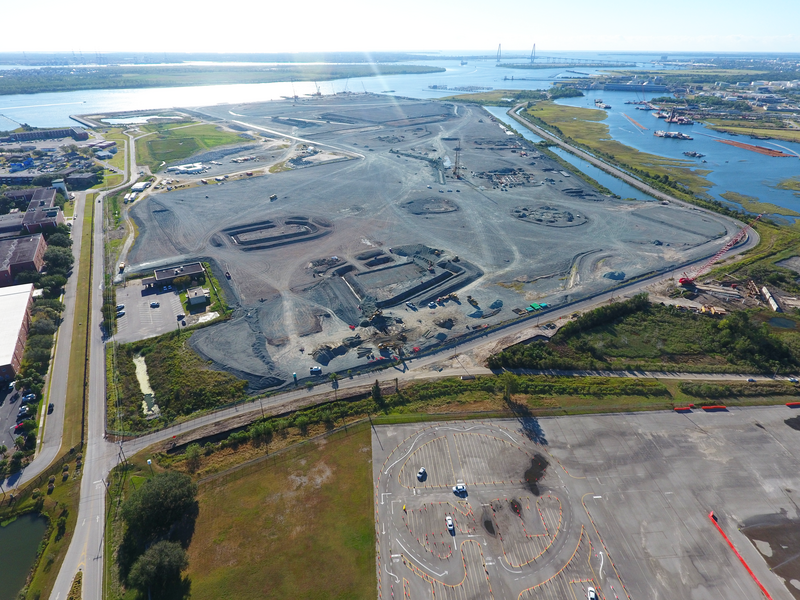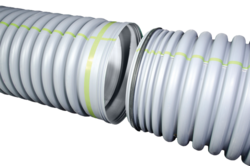PRODUCTS USED
- 7,000’ (2,134 m) of 60” (1,500 mm) HP Storm Dual Wall Pipe
- 1,300' (396 m) of 48" (1,200 mm) HP Storm Dual Wall Pipe
- 2,260' (689 m) of 42" (1,050 mm) HP Storm Dual Wall Pipe
- 2,440' (744 m) of 36" (900 mm) HP Storm Dual Wall Pipe
- 4,460' (1,359 m) of 30" (750 mm) HP Storm Dual Wall Pipe
- 5,900' (1,798 m) of 24" (600 mm) HP Storm Dual Wall Pipe
- 4,880' (1,487 m) of 18" (450 mm) HP Storm Dual Wall Pipe
- 200' (61 m) of 12" (300 mm) HP Storm Dual Wall Pipe
After reviewing data, it was determined that concrete pipe, initially selected for the stormwater runoff system, was not capable of providing the joint performance due to anticipated settlement. The engineer wanted to utilize a flexible pipe system so the pipe could adapt to settlement on the site. “One of the biggest issues was the very poor soil and the anticipation of as much as a foot of settlement after construction,” said Stuart Timmons, P.E., water resources engineer for Infrastructure Consulting & Engineering PLLC. “The settlement of 12 inches (300 mm) over 25 years is not something that you typically see on a major infrastructure project like this one. That was definitely a key factor we were always designing around and looking at ways that would better suit those conditions. It was the number one challenge we had to overcome.”
The engineers recommended using polypropylene pipe as the stiffness of the pipe was suited for the site’s conditions and joints are double gasketed. The engineer specified HP Storm due to secure joint performance, the ability to flex with the soil and provide strength, while being easy to handle. Over 28,000 feet (8,534 m) of HP Storm was used for stormwater conveyance on the 280-acre site.
In addition to its flexibility, HP Storm met the strength and drainage requirements of the site. The storm drain system is designed for a 10-year storm and needs to carry runoff for more than a mile with a minimum slope of 0.33 percent. The system also had to be able to withstand live and dead loads much greater than an average highway project. In addition to typical heavy equipment found at a container terminal, a loader container handler is rated at nearly 92,000 pounds (41,730 kg) per axle.
HP Storm also allowed the contractor to remain on its aggressive schedule by saving months of installation time versus the time and manpower that is required of concrete pipe and culverts.
“We found out that polypropylene pipe is forgiving and sturdy. We were actually digging the trenches in the rock and even with that rigid rock, the pipe worked well,” said Billy Fulton, utility manager for Banks Construction Company. “The problem with another alternative, corrugated steel, is that with the rock it’s a corrosion-type thing. If you put in the corrugated metal pipe in there with all the material, it would erode away within 10 years. Plus, it’s just not as sturdy where you need a double-wall installation.”


